Peer Reviewed Articles in Journals and Conference Proceedings
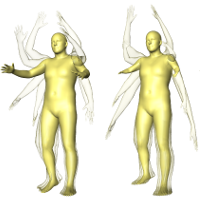
Riemannian Statistical Shape Model |
Christoph von Tycowicz, Felix Ambellan, Anirban Mukhopadhyay, and Stefan Zachow: An Efficient Riemannian Statistical Shape Model using Differential Coordinates. Medical Image Analysis, Volume 43, January 2018. We propose a novel Riemannian framework for statistical analysis of shapes that is able to account for the nonlinearity in shape variation. By adopting a physical perspective, we introduce a differential representation that puts the local geometric variability into focus. We model these differential coordinates as elements of a Lie group thereby endowing our shape space with a non-Euclidean structure. A key advantage of our framework is that statistics in a manifold shape space becomes numerically tractable improving performance by several orders of magnitude over state-of-the-art. We show that our Riemannian model is well suited for the identification of intra-population variability as well as inter-population differences. In particular, we demonstrate the superiority of the proposed model in experiments on specificity and generalization ability. We further derive a statistical shape descriptor that outperforms the standard Euclidean approach in terms of shape-based classification of morphological disorders. |

Processing Deformable Object Motion |
Christopher Brandt, Christoph von Tycowicz, and Klaus Hildebrandt: Geometric Flows of Curves in Shape Space for Processing Motion of Deformable Objects, video. Computer Graphics Forum 35(2) (Eurographics 2016). We introduce techniques for the processing of motion and animations of non-rigid shapes. The idea is to regard animations of deformable objects as curves in shape space. Then, we use the geometric structure on shape space to transfer concepts from curve processing in Rn to the processing of motion of non-rigid shapes. Following this principle, we introduce a discrete geometric flow for curves in shape space. The flow iteratively replaces every shape with a weighted average shape of a local neighborhood and thereby globally decreases an energy whose minimizers are discrete geodesics in shape space. Based on the flow, we devise a novel smoothing filter for motions and animations of deformable shapes. By shortening the length in shape space of an animation, it systematically regularizes the deformations between consecutive frames of the animation. The scheme can be used for smoothing and noise removal, e.g., for reducing jittering artifacts in motion capture data. We introduce a reduced-order method for the computation of the flow. In addition to being efficient for the smoothing of curves, it is a novel scheme for computing geodesics in shape space. We use the scheme to construct non-linear Bézier curves by executing de Casteljau's algorithm in shape space. |
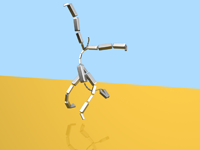
Character Spacetime Control |
Christian Schulz, Christoph von Tycowicz, Hans-Peter Seidel, and Klaus Hildebrandt: Animating Articulated Characters using Wiggly Splines, video. ACM SIGGRAPH/Eurographics Symposium on Computer Animation 2015, pages 101-109. We propose a new framework for spacetime optimization that can generate artistic motion with a long planning horizon for complex virtual characters. The scheme can be used for generating general types of motion and neither requires motion capture data nor an initial motion that satisfies the constraints. Our modeling of the spacetime optimization combines linearized dynamics and a novel warping scheme for articulated characters. We show that the optimal motions can be described using a combination of vibration modes, wiggly splines, and our warping scheme. This enables us to restrict the optimization to low-dimensional spaces of explicitly parametrized motions. Thereby the computation of an optimal motion is reduced to a low-dimensional non-linear least squares problem, which can be solved with standard solvers. We show examples of motions created by specifying only a few constraints for positions and velocities. |

Real-Time Interpolation |
Christoph von Tycowicz, Christian Schulz, Hans-Peter Seidel, and Klaus Hildebrandt: Real-Time Nonlinear Shape Interpolation, video. ACM Transactions on Graphics, Volume 34, Issue 3, May 2015, pages 34:1-34:10. (Presented at SIGGRAPH 2015) We introduce a scheme for real-time nonlinear interpolation of a set of shapes. The scheme exploits the structure of the shape interpolation problem, in particular, the fact that the set of all possible interpolated shapes is a low-dimensional object in a high-dimensional shape space. The interpolated shapes are defined as the minimizers of a nonlinear objective functional on the shape space. Our approach is to construct a reduced optimization problem that approximates its unreduced counterpart and can be solved in milliseconds. To achieve this, we restrict the optimization to a low-dimensional subspace that is specifically designed for the shape interpolation problem. The construction of the subspace is based on two components: a formula for the calculation of derivatives of the interpolated shapes and a Krylov-type sequence that combines the derivatives and the Hessian of the objective functional. To make the computational cost for solving the reduced optimization problem independent of the resolution of the example shapes, we combine the dimensional reduction with schemes for the efficient approximation of the reduced nonlinear objective functional and its gradient. In our experiments, we obtain rates of 20-100 interpolated shapes per second even for the largest examples which have 500k vertices per example shape. |
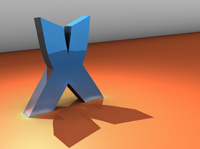
Sparse Spacetime Constraints |
Christian Schulz, Christoph von Tycowicz, Hans-Peter Seidel, and Klaus Hildebrandt: Animating Deformable Objects using Sparse Spacetime Constraints, video (51 MB), supplementary material. ACM Transactions on Graphics (SIGGRAPH 2014), Volume 33, Issue 4, July 2014, pages 109:1-109:10. We propose a scheme for animating deformable objects based on spacetime optimization. The main feature is that it robustly and quickly (within a few seconds) generates interesting motion from a sparse set of spacetime constraints. Providing only partial (as opposed to full) keyframes for positions and velocities is sufficient. The computed motion satisfies the constraints and the remaining degrees of freedom are determined by physical principles using elasticity and the spacetime constraints paradigm. Our modeling of the spacetime optimization problem combines dimensional reduction, modal coordinates, wiggly splines, and rotation strain warping. Controlling the warped motion requires the derivative of the warp map. We derive a representation of the derivative that can be efficiently and robustly evaluated. Our solver is based on a theorem that characterizes the solutions of the optimization problem and allows us to restrict the optimization to very low-dimensional search spaces. This treatment of the optimization problem avoids a time discretization and the resulting method can robustly deal with sparse input and wiggly motion. |
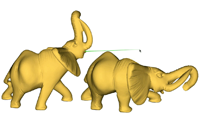
Efficient Model Reduction |
Christoph von Tycowicz, Christian Schulz, Hans-Peter Seidel, and Klaus Hildebrandt: An Efficient Construction of Reduced Deformable Objects (11 MB), video (64 MB). ACM Transactions on Graphics (SIGGRAPH Asia 2013), Volume 32, Issue 6, November 2013, pages 213:1-213:10. Many efficient computational methods for physical simulation are based on model reduction. We propose new model reduction techniques for the approximation of reduced forces and for the construction of reduced shape spaces of deformable objects that accelerate the construction of a reduced dynamical system, increase the accuracy of the approximation, and simplify the implementation of model reduction. Based on the techniques, we introduce schemes for real-time simulation of deformable objects and interactive deformation-based editing of triangle or tet meshes. We demonstrate the effectiveness of the new techniques in different experiments with elastic solids and shells and compare them to alternative approaches. |
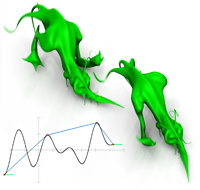
Spacetime Control |
Klaus Hildebrandt, Christian Schulz, Christoph von Tycowicz, and Konrad Polthier: Interactive spacetime control of deformable objects (4.6 MB), video (76 MB). ACM Transactions on Graphics (SIGGRAPH 2012), Volume 31, Issue 4, July 2012, pages 71:1-71:8. Creating motions of objects or characters that are physically plausible and follow an animator’s intent is a key task in computer animation. The spacetime constraints paradigm is a valuable approach to this problem, but it suffers from high computational costs. Based on spacetime constraints, we propose a technique that controls the motion of deformable objects and offers an interactive response. This is achieved by a model reduction of the underlying variational problem, which combines dimension reduction, multipoint linearization, and decoupling of ODEs. After a preprocess, the cost for creating or editing a motion is reduced to solving a number of one-dimensional spacetime problems, whose solutions are the wiggly splines introduced by Kass and Anderson [2008]. We achieve interactive response using a new fast and robust numerical scheme for solving a set of one-dimensional problems based on an explicit representation of the wiggly splines. |
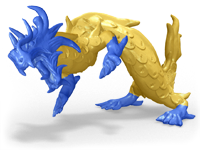
Interactive Modeling |
Klaus Hildebrandt, Christian Schulz, Christoph von Tycowicz, and Konrad Polthier: Interactive Surface Modeling using Modal Analysis (9.5 MB), video (57 MB). ACM Transactions on Graphics, Volume 30, Issue 5, October 2011, pages 119:1-119:11. (Presented at SIGGRAPH 2012) We propose a framework for deformation-based surface modeling that is interactive, robust and intuitive to use. The deformations are described by a non-linear optimization problem that models static states of elastic shapes under external forces which implement the user input. Interactive response is achieved by a combination of model reduction, a robust energy approximation, and an efficient quasi-Newton solver. Motivated by the observation that a typical modeling session requires only a fraction of the full shape space of the underlying model, we use second and third derivatives of a deformation energy to construct a low-dimensional shape space that forms the feasible set for the optimization. Based on mesh coarsening, we propose an energy approximation scheme with adjustable approximation quality. The quasi-Newton solver guarantees superlinear convergence without the need of costly Hessian evaluations during modeling. We demonstrate the effectiveness of the approach on different examples including the test suite introduced in [Botsch and Sorkine 2008]. |
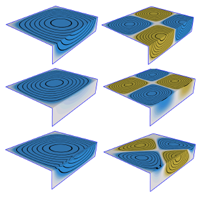
Modal Shape Analysis |
Klaus Hildebrandt, Christian Schulz, Christoph von Tycowicz, and Konrad Polthier: Modal Shape Analysis beyond Laplacian (1.1 MB), video (7 MB). Computer Aided Geometric Design, Volume 29, Issue 5, June 2012, Pages 204-218. In recent years, substantial progress in shape analysis has been achieved through methods that use the spectra and eigenfunctions of discrete Laplace operators. In this work, we study spectra and eigenfunctions of discrete differential operators that can serve as an alternative to the discrete Laplacians for applications in shape analysis. We construct such operators as the Hessians of surface energies, which operate on a function space on the surface, or of deformation energies, which operate on a shape space. In particular, we design a quadratic energy such that, on the one hand, its Hessian equals the Laplace operator if the surface is a part of the Euclidean plane, and, on the other hand, the Hessian eigenfunctions are sensitive to the extrinsic curvature (e.g. sharp bends) on curved surfaces. Furthermore, we consider eigenvibrations induced by deformation energies, and we derive a closed form representation for the Hessian (at the rest state of the energy) for a general class of deformation energies. Based on these spectra and eigenmodes, we derive two shape signatures. One that measures the similarity of points on a surface, and another that can be used to identify features of surfaces. |
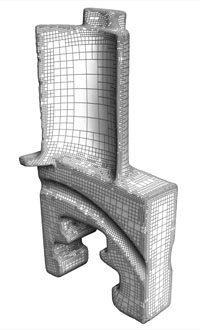
Context-Based Coding of AMR Meshes |
Christoph von Tycowicz, Felix Kälberer, and Konrad Polthier: Context-Based Coding of Adaptive Multiresolution Meshes (1.4 MB). Computer Graphics Forum, Volume 30, Issue 8, pages 2231-2245, December 2011. Multiresolution meshes provide an efficient and structured representation of geometric objects. To increase the mesh resolution only at vital parts of the object, adaptive refinement is widely used. We propose a lossless compression scheme for these adaptive structures that exploits the parent-child relationships inherent to the mesh hierarchy. We use the rules that correspond to the adaptive refinement scheme and store bits only where some freedom of choice is left, leading to compact codes that are free of redundancy. Moreover, we extend the coder to sequences of meshes with varying refinement. The connectivity compression ratio of our method exceeds that of state-of-the-art coders by a factor of 2 to 7. For efficient compression of vertex positions we adapt popular wavelet-based coding schemes to the adaptive triangular and quadrangular cases to demonstrate the compatibility with our method. Akin to state-of-the-art coders, we use a zerotree to encode the resulting coefficients. Using improved context modeling we enhanced the zerotree compression, cutting the overall geometry data rate by 7% below those of the successful Progressive Geometry Compression. More importantly, by exploiting the existing refinement structure we achieve compression factors that are 4 times greater than those of coders which can handle irregular meshes. |

Eigenmodes |
Klaus Hildebrandt, Christian Schulz, Christoph von Tycowicz, and Konrad Polthier: Eigenmodes of Surface Energies for Shape Analysis, Advances in Geometric Modeling and Processing (Proceedings of Geometric Modeling and Processing 2010), Lecture Notes in Computer Science 6130, Springer, pages 296-314.
In this work, we study the spectra and eigenmodes of the Hessian of various discrete surface energies
and discuss applications to shape analysis. In particular, we consider a physical model that describes
the vibration modes and frequencies of a surface through the eigenfunctions and eigenvalues of the
Hessian of a deformation energy, and we derive a closed form representation for the Hessian (at the rest
state of the energy) for a general class of deformation energies. Furthermore, we design a quadratic energy,
such that the eigenmodes of the Hessian of this energy are sensitive to the extrinsic curvature of the surface.
|
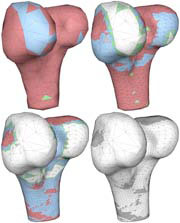
Compression of AMR Meshes |
Felix Kälberer, Christoph von Tycowicz, and Konrad Polthier: Lossless Compression of Adaptive Multiresolution Meshes, Sibgrapi 2009 Technical Paper We present a novel coder for lossless compression of adaptive multiresolution meshes that exploits their special hierarchical structure. The heart of our method is a new progressive connectivity coder that can be combined with leading geometry encoding techniques. The compressor uses the parent/child relationships inherent to the hierarchical mesh. We use the rules that accord to the refinement scheme and store bits only where it leaves freedom of choice, leading to compact codes that are free of redundancy. To illustrate our scheme we chose the widespread red-green refinement, but the underlying concepts can be directly transferred to other adaptive refinement schemes as well. The compression ratio of our method exceeds that of state-of-the-art coders by a factor of 2 to 3 on most of our benchmark models. |
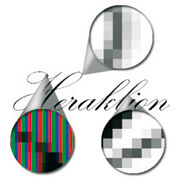
Minification of Fonts on the GPU |
Christoph von Tycowicz, and Jörn Loviscach: Measuring and Enhancing the Legibility of GPU-rendered Text, Eurographics 2008 Short Papers The limited spatial resolution of standard computer displays impedes the legibility of text. To improve the rendering, we have developed a number of strategies that employ GPU-based shader programs and appropriate preprocessing steps. We devised and implemented a set of methods that may be used alone or in combination ranging from simple measures such as gamma-correct MIPmapping to complex ones such as RGB subpixel rendering combined with supersampling. We have researched into their performance in terms of both legibility and speed. We difinded a psychovisual test that quantifies legibility quickly enough to compare a selection of promising techniques. The results allow to choose the optimum blend of rendering methods for a given set of requirements. |
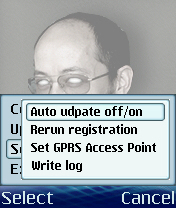
Mobile Phone Diversity in Ubicomp Exp. Dev. |
C. Greenhalgh, S. Benford, A. Drozd, M. Flintham, A. Hampshire, L. Oppermann, K. Smith, and Christoph von Tycowicz: Addressing Mobile Phone Diversity in Ubicomp Experience Development, UbiComp 2007 Paper Mobile phones are a widely-available class of device with supporting communications infrastructure which can be appropriated and exploited to support ubicomp experiences. We explore how a single dimension of phone application type embodies the critical trade-off between capability and availability. |